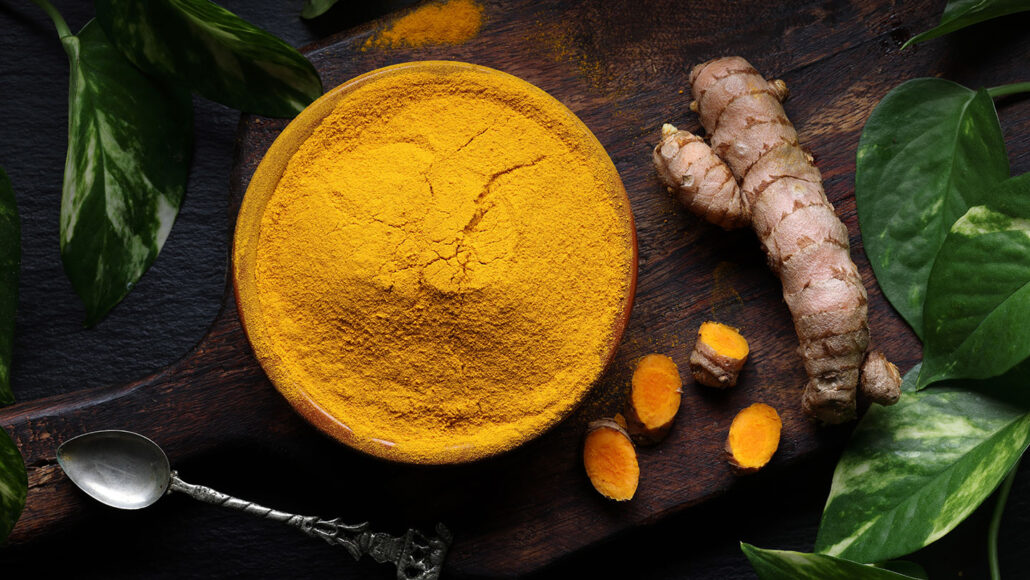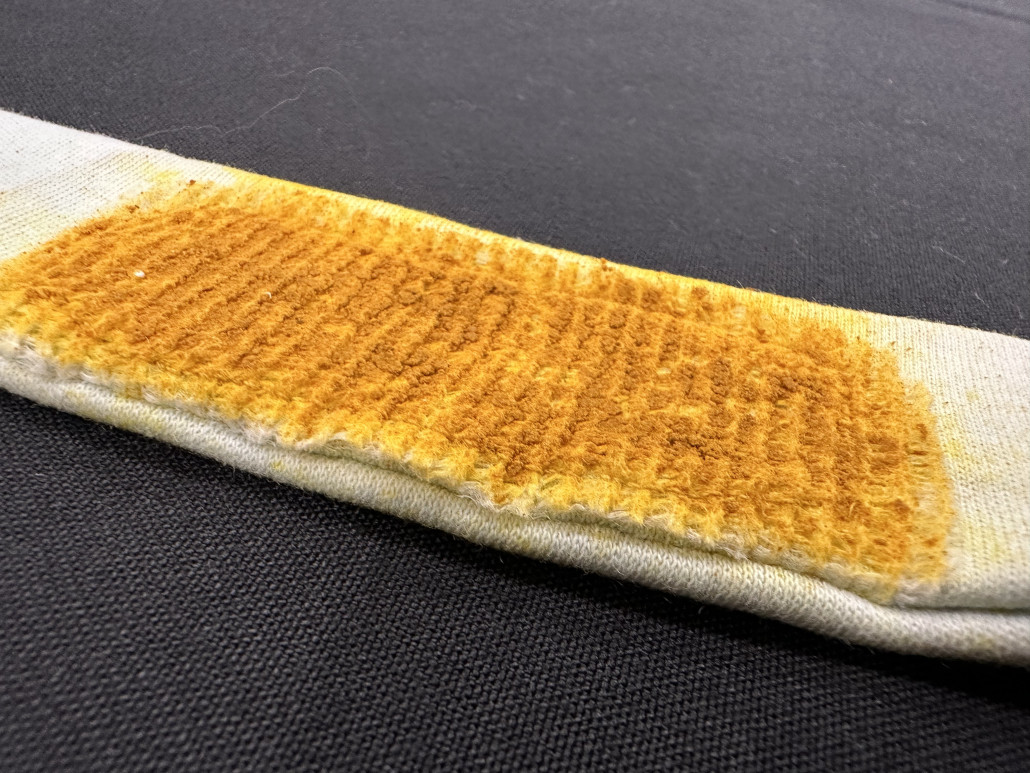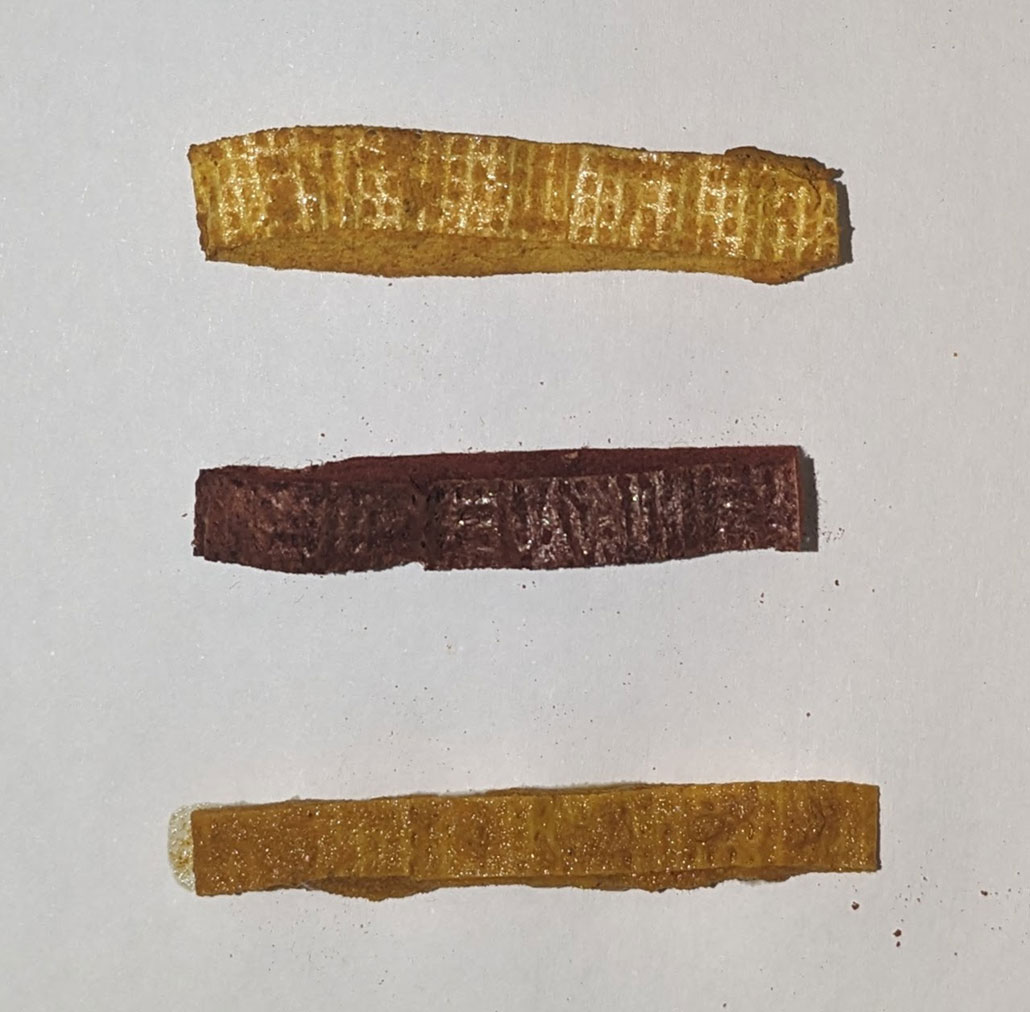This spice could be the basis of a smart, infection-fighting bandage
This yellow turmeric turns red when exposed to a high pH, typical of an infected wound

Dried turmeric root can be ground into a powder that’s used to flavor foods — and treat wounds. Inspired by her grandmother’s turmeric-based home remedy, Ishita Mukadam has now developed a smart bandage infused with the spice. It’s something she one day hopes to patent.
SGAPhoto/E+/Getty Images Plus
LOS ANGELES, Calif. — Many people reach for a bandage when they get a cut. Fewer people reach for their spice cabinet. But Ishita Mukadam learned that turmeric seems to help heal wounds. So she’s now created a biodegradable bandage infused with this bright yellow spice. It also signals when a sore becomes infected.
“Turmeric has anticoagulation properties,” the 18-year-old notes. That means it slows blood-clotting. This spice also kills bacteria and fights inflammation. So it should boost healing, she reports.

Building on earlier work she’d done, Ishita has now shown turmeric (Curcuma longa) transforms from yellow to red in an alkaline environment. That means one with a high pH. Infected wounds usually create a high pH, the teen notes. So she says her turmeric-infused bandages — called TurmBand — can warn of an infection before it spreads and turns dangerous.
Ishita was a finalist at the Regeneron International Science and Engineering Fair (ISEF), here, in mid-May. ISEF is a program of the Society for Science (which also publishes this magazine). A recent graduate of the Maharishi School in Fairfield, Iowa, the teen took fourth place in the fair’s translational medical science division. It brought her a cash award of $500. For this work, the U.S. Air Force Research Laboratory gave her an additional special award of $750.
Do you have a science question? We can help!
Submit your question here, and we might answer it an upcoming issue of Science News Explores
A sprinkle of turmeric
Ishita’s work was inspired by a trip to India. While visiting family a few years back, she scraped her knee. “My traditional grandmother sprinkled turmeric on my knee,” the teen recalls. “I eat turmeric,” she realized. So why, she wondered, did her grandmother put food on a wound?

People in Asia have used the spice as a medicine for thousands of years, she learned. “But it hasn’t been researched too much in terms of wound healing,” Ishita found.
In response to what she learned, the teen created her first version of TurmBand in 2022. She showcased it at ISEF that year in Atlanta, Ga. Her prototype was made of organic cotton cloth. It contained a padded area smeared with turmeric and shea butter to help the spice stick. Hook-and-loop tape sealed the bandage shut.
But after that competition, Ishita turned up a research paper on turmeric’s color-changing ability. It described how pH affected the spice’s color — and that this might be a way to highlight the freshness of packaged foods. Ishita also knew that the pH of a wound tends to rise when it becomes infected. She thought these two turmeric traits could be combined to make a smarter bandage.
“But [that paper] didn’t specifically say what pH it changes [color] at,” she says. “So I needed to find that on my own.”
Changing colors
Ishita tested 10 liquids at pH levels ranging from 1 to 13 (on the 14-point scale). Acidic liquids are below 7 (such as hydrochloric acid, with a pH of 1 ). Solutions above 7 are basic, such as bleach (with a pH of 11 to 13 ).
The teen poured 0.5 milliliters (0.1 teaspoon) of each liquid into its own well (depression) in a clear tray. Then, she added equal amounts of turmeric to each well. Half a minute later, Ishita snapped photos of the tray. She analyzed those photos using computer software for any color changes.

In this way, Ishita learned that turmeric changes color at a pH of 8 to 9. And that, she says, “is the exact pH of local wound infections.” At that pH, the spice turns from yellow to deep red. “You can visually see it,” Ishita says. “There’s no missing that color.”
She then tested her mix of turmeric and shea butter on three potential bandage materials. One was organic cotton cloth. She also used gauze. The third was a store-bought adhesive bandage. To simulate an infected wound, she added some sodium bicarbonate (NaHCO3) to the mix on each bandage. Also known as baking soda, this has a pH of 9.
Ishita snapped photos for color analysis after 30 seconds. She took more photos three days later. That’s because common symptoms of wound infection, such as redness and pus, usually emerge two or three days after the initial infection, the teen says.
Using the color-analyzing software, Ishita found that her infected-wound simulation worked well on all three potential bandage materials. The color change showed up on organic cotton as clearly as on store-bought plastic-based bandages.
Organic cotton is more sustainable than the plastic in many currently available bandages, which end up in landfills, Ishita says. And that cotton “has already been proven to be biodegradable.”
Biodegradable and inexpensive
TurmBand isn’t just a “greener” way to heal wounds and warn of infection, the teen says. It’s also cost-effective. Each bandage cost her about $0.44 to make. Store-bought plastic bandages, in contrast, cost almost twice as much — and don’t highlight infections, Ishita notes. And applying an antibiotic ointment to the wound would add another $1.16, she estimates. That total price of $1.97 could start to approach five times the cost of TurmBand.
Ishita has now developed a second prototype of TurmBand. It uses removable turmeric-infused pads made of organic cotton cloth. Its outer cloth band can be washed and reused over and over. The teen hopes to patent her bandage in the future. Watch a video of her describing her new work here.
This young scientist was among nearly 2,000 Regeneron ISEF finalists who competed from almost 70 countries, regions and territories this year for more than $9 million in prizes. This high school event has been run by Society for Science since this organization created the fair in 1950.







